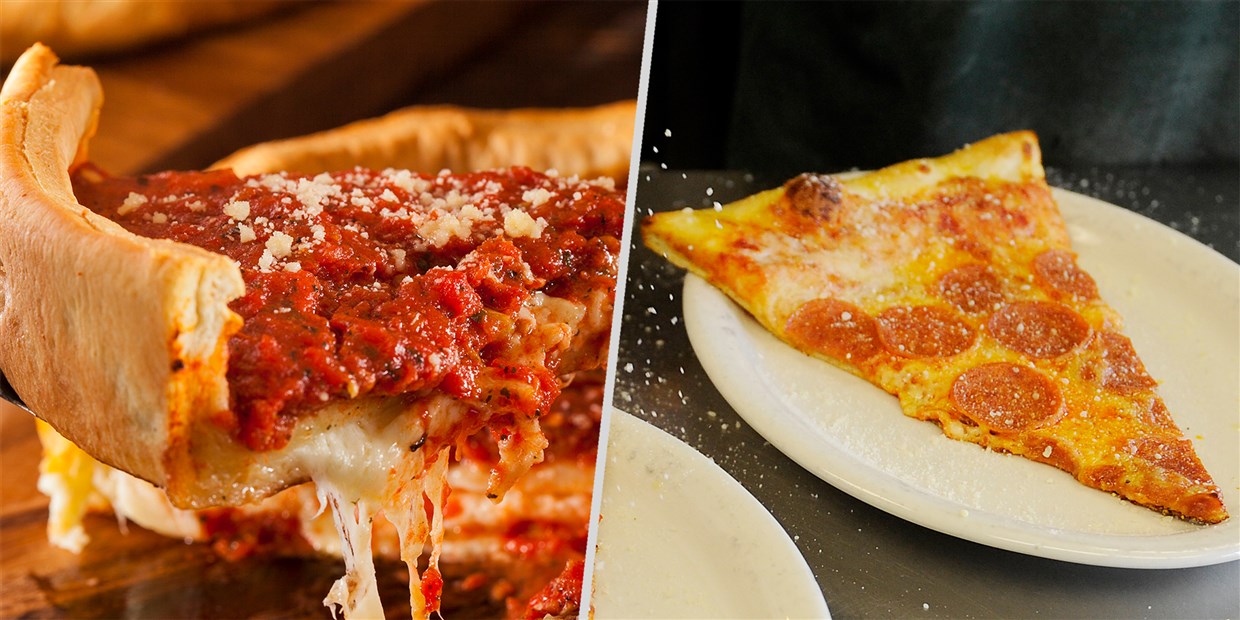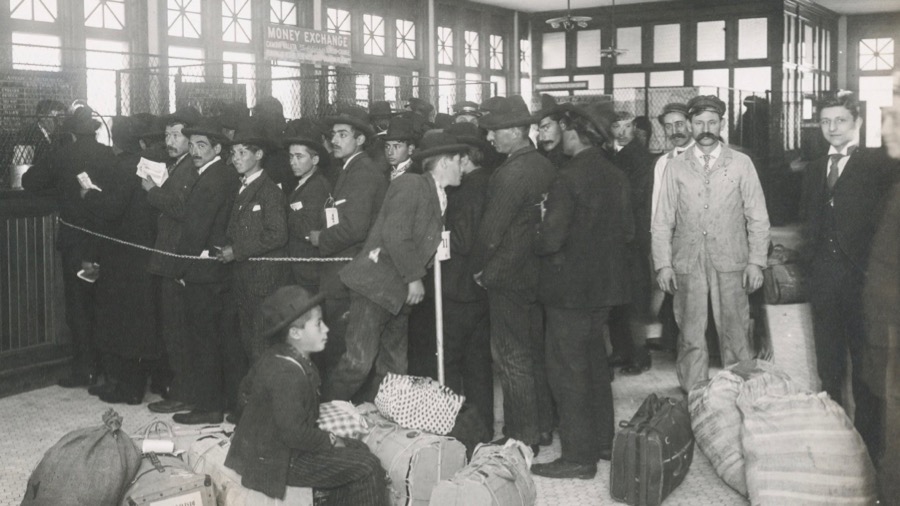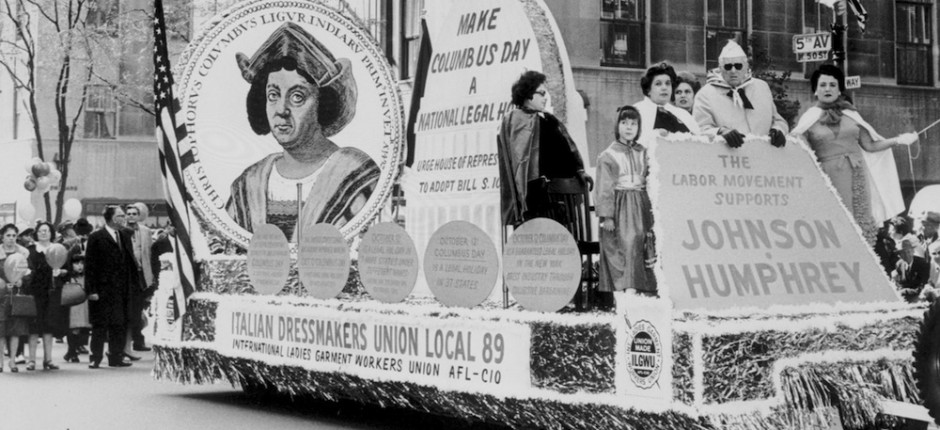Italian
New York vs Chicago Pizza

Americans love pizza. According to Pizza Com 94 percent of Americans include pizza in their regular diet. We love our pizza in various styles and with various toppings. Arguably, however, the two most famous pizza styles are New York and Chicago. If you think it boils down to an argument of thin crust vs. deep dish, hold that thought.
My spouse was born in Chicago in the 1950s, and according to both him and his Chicagoan parents, deep-dish pizza is as much a tourist flavor trap as a Hawaiian Mai Tai on Waikiki Beach. Local Chicagoans preferred a thin crust, square-cut pizza known as ‘tavern’ pizza. To understand the difference between New York pizza and the locally favored Chicago pizza, let’s talk pizza’s history.
NEAPOLITAN (NAPLES) VS SICILIAN (SICILY)
Modern pizza, something we would recognize and enjoy today as a classic pie, is thought to have been invented in 1889 when Neapolitan chef, Raffaele Esposito, presented his culinary creation to honor Queen Margherita of Savoy, wife of King Umberto I. With nationalistic inspiration, Esposito limited his ingredients to representations of the colors of the Italian flag; basil (green), mozzarella (white), and tomato (red).
Classic Margherita Pizza
Thus was born the Neapolitan Margherita pizza. This style of pizza is characterized by a thin wood-fired crust with San Marzano plum tomatoes, fresh cow or buffalo milk mozzarella, and fresh basil. This culinary art is so inherently Italian that UNESCO designated the Neapolitan style as an “Intangible Cultural Heritage.” Neapolitan ‘Pizzaiuolo’ chefs wishing to adhere to the historic methods seek certification through the Associazione Verace Pizza Napolentena. The AVPN keeps the history of the practice, verifies cooking techniques, offers courses, and lists certified pizzerias from all over the world.
Training Starts Early
In contrast to the Neapolitan pizza, the Sicilian pizza developed from the sfincione, or flatbread, popular in the Sicilian area. The crust is thicker with a spongy middle and crisp edge. The Sicilian style is distinctive for its square shape, and corresponding square cut pieces. Rather than using cows’ or buffalos’ cheese, bakers used cheese from the more plentiful sheep of the area. Baking an authentic Sicilian pizza isn’t dependent on wood, and bakers can make it in any style oven.
ITALIAN IMMIGRATION
Both Neapolitan and Sicilian styles made their way to American with the various waves of Italian immigrants. By far, New York has the largest Italian American population and has been called “the Italian American capital.” While immigrants were arriving throughout the 18th and 19th centuries, the largest influx occurred in the early 19th century. Between 1880 and 1914, over 3 million Italians, mostly younger men from southern Italy, emigrated to America and arrived in New York.
Little Italy of Mulberry Street
While Chicago experienced a first wave of Italian immigrants in the 1850s, the city saw the largest population surge from 1900 to 1914. One of the major differences between New York and Chicago was the push of Italian Americans out of the Chicago city center, because of both new construction and expansion, to the southern and western suburbs. By 1920, Chicago boasted the 3rd largest Italian American population, behind New York and Philadelphia.
NEW YORK SLICE
It’s held that the first New York pizzeria is the historic Lombardi’s [https://www.firstpizza.com/] , established in 1905. However, author Peter Regas explores some forgotten early Italian bakers, specifically Filippo Milone as “The Man Who Brought Pizza to America.” [https://www.history.com/news/pizza-origins-discovery-new-york-filippo-milone-lombardis] as early as 1898. However, it arrived, Neapolitan pizza was here to stay by the 1920s with the establishment of other New York mainstays Totonno’s and John’s of Bleecker Street
However, economy caused changes in the traditional recipes of home. The New York pizzeria owners couldn’t afford to import Italian wood, cheese and flour. Instead, they switched to coal-fired ovens and sourced cheese and flour from local sellers. The final, but most important, change was in the dough and came from the fabled minerals said to be found only in New York water.
CHICAGO TAVERN STYLE
Italian bakers in Chicago also established themselves in the 1920s. However, the real solidification of the Chicago tavern-style starts in the 1940s when the local pubs in the suburbs started serving free pizza on the bar. American soldiers returning from their tours in Italy during WWII, demanded the tastes they’d had oversees. By the mid-1950s, Chicago tavern-style was an established favorite of the local working man, with a beer in one hand and a pizza square in the other.
CRUST
The difference of New York pizza and Chicago pizza starts with the crust. New York pizza is thin but needs that certain stability that allows for the famous ‘fold’. New York pizza crust is a simple mix of salt, flour, water, and yeast, with no additional ingredients. The crust might have a raised rim, but more often the whole pie is flat. Finally, the dough must be hand-tossed to be authentic.
The Chicago crust is thicker, with a spongy middle. Some pizzerias use less salt or leave it out altogether. Because of this practice, Chicagoans salt their pizza as a matter of practice. Chicago pizza is hand-rolled and doesn’t depend on the high heat of a wood or coal fire. For these reasons, Chicago thin crust pizza is easy to make at home.
Make Chicago Thin Crust at Home
TOPPING
There’s not much to say about toppings. Americans love toppings, whether is pepperoni, sausage, or pineapple. However, a traditional New York pizza is served simply with mozzarella and basil. Whether the cheese is in the form of fresh slices or dried shavings is a matter of taste. The dried mozzarella makes a more uniform gooey topping and creates the classic fast-food choice of the New York streets. By contrast, Chicagoans like some meat on their pizza, but forgo pepperoni in favor of classic Italian sausage.
SHAPE
The real difference of New York pizza and Chicago pizza is a throw-back to their Neapolitan and Sicilian origins. Like a lot of other New York specialties, the New York slice is big…really big! A pie might be as small as 18-inches in diameter, but some pizzerias advertise pies as large as 30-inches. This makes the ‘fold’ a necessity, not just an affectation. Most New Yorkers buy by-the-slice and eat it on the run.
The Chicago thin crust pizza is square. Whether that reminds locals of the pizza’s Sicilian origins or its heyday as a bar snack is another debate. Regardless, patrons agree the tavern-style is best enjoyed with a cold beer in one hand and a piece in the other. Pizza is purchased as a whole pie but sliced into pieces so that everyone can enjoy 2-3 pieces as a sit-down meal.
CONCLUSION
Pizza is good…period. Whether you favor the New York (My Choice) slice or Chicago style, give a little thanks to the Italians who brought this taste of Italy with them. And the next time someone asks if you’d like to try real Chicago pizza, put down that deep-dish and opt for the tavern thin crust. It might just surprise you.
-

 Heritage5 years ago
Heritage5 years agoA Rough Beginning For Italians in America
-

 Heritage5 years ago
Heritage5 years agoWhat it truly means to be Italian
-

 Heritage5 years ago
Heritage5 years agoItalians And Family Values
-

 Italian5 years ago
Italian5 years agoTop 9 Popular Italian Pastries
-

 Heritage5 years ago
Heritage5 years agoEllis Island Italian Americans
-

 Italian5 years ago
Italian5 years agoIn 1962, an Italian magazine carried a story on how the world will look in 2022. Is it Real???
-

 Heritage5 years ago
Heritage5 years agoHow Italian American families celebrate holidays
-

 Heritage5 years ago
Heritage5 years agoColumbus and the Legacy of Italian Americans






